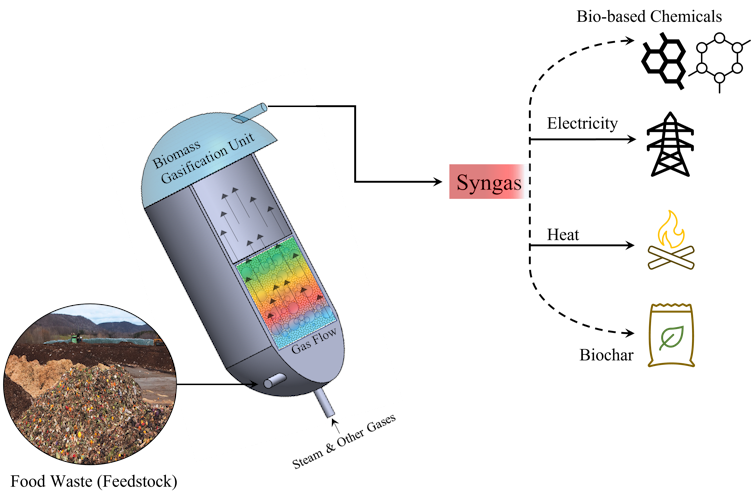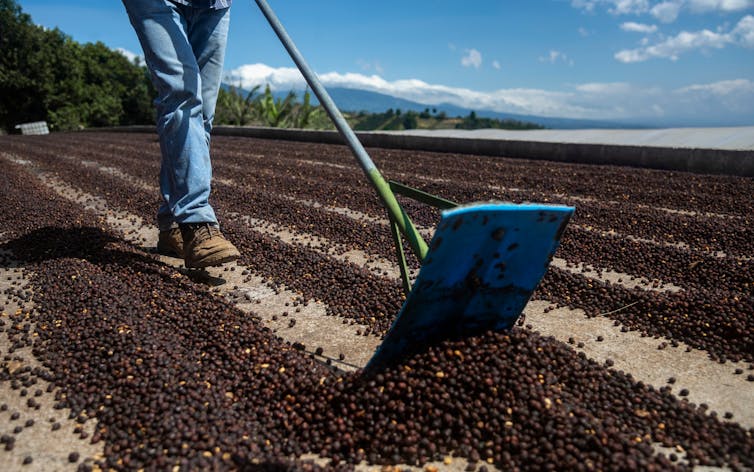Here’s how food waste can generate clean energy
In an effort to reduce the growing problem of food waste disposal, researchers are focusing on developing new green technologies that use food waste to generate clean energy. (Shutterstock)
Published: March 27, 2022
Food waste is a growing problem in Canada and many other parts of the world — and it is only expected to get worse in the coming years. The world population is expected to grow to 9.7 billion by 2050, alongside global food demand.
Not only will this create large amounts of food and municipal organic waste, but there will also be increasing amounts of agricultural waste as the global demand of vegetables, fruits and grains increases. An estimated 60 per cent of food produced in Canada — over 35 million tonnes per year — ends up in landfills. However, Canadian cities have also run out of land to dispose this accumulating waste.
Food waste comes with its own set of issues, including greenhouse gas emissions, unpleasant odours, pests and toxic fluids that can infiltrate water sources. In addition, every year, municipal dumps take over more land, reaching the edges of communities, which can lead to health issues for those who are living nearby.
In an effort to reduce the growing problem of food waste disposal, researchers like myself are focusing on developing new technologies that use food waste to generate clean energy. My team and I are studying a process known as biomass gasification.
Biomass gasification
Biomass gasification uses heat, oxygen, steam, or a mixture of those, to convert biomass — food and agricultural waste or other biological materials — into a mixture of gases that can be used as fuel.

Biomass gasification works by feeding semi-dry food waste into a unit that looks a bit like a cooking pot, where it passes through a hot, bubbling substance that converts it to fuel gas. This process, known as fluidization is very efficient at converting food waste into high-valuable sources of energy-rich synthesis gas, a mixture of hydrogen, methane, carbon monoxide and carbon dioxide, also called syngas. Syngas can be used to generate heat and power. This process is sustainable because is considered to be carbon-neutral.
Farms, cities and municipalities could implement this sustainable technology to cut utility expenses for heating or electricity. They could also significantly reduce dependency on landfills and lower the operating budget for solid waste management services which can reach near $380 million per year for a city the size of Toronto.
Replacing fossil fuels
The consumption of fossil fuels and their derivatives has created an environmental crisis, mainly due to greenhouse gas emissions in the atmosphere, which has led to climate change. As governments around the world implement climate policies that restrict greenhouse gas emissions or tax them, it is important to replace fossil fuels with alternative renewable sources of energy such as agricultural and food waste.
Although syngas can be used like a conventional natural gas, which is a methane-based fossil fuel, it is different from it because of its higher composition of carbon monoxide and hydrogen.
These gases can be further converted into high-value bio-based chemicals such as methanol and ammonia. Biomass gasification also generates biochar, which can be used to improve soil fertility.
While the production of syngas depends on the type of biomass and technology used. The Canadian Atikokan Generating Station, for instance, produced 205 megawatts of clean electricity. This is enough energy to power about 70, 000 residential and commercial buildings.
Global projects
Countries such as Finland, Brazil, Italy, Denmark and the United States are leading the way in developing sustainable and cost-efficient biomass gasification projects and using food waste to support their domestic production of heat, power and bio-based chemicals. Canada has a few companies supplying energy and bio-based chemicals from municipal waste. In this case, Canada produces 1.4 per cent of its electricity with Biomass.

Costa Rica is another example. As one of the top 20 coffee producers in the world, Costa Rica generates a significant amount of agricultural waste from coffee production and its disposal presents serious environmental problems. Its present solution is biomass gasification technologies to convert coffee pulp into heat and power.
Small and marginal communities could also take full advantage of biomass gasification technologies by reducing the amount of food waste that accumulates in landfills, producing their own energy and power and significantly lowering their utilities expenses.
A sustainable and circular economy
Biomass gasification is a sustainable and technological strategy that turns food waste to a value-added product. It is a step along the path to a circular economy culture of zero waste.
Policy leaders and governments need to support sustainable programs by providing financial aid, subsidies and tax incentives. These programs may also encourage individuals and companies to invest in biomass gasification technologies and develop them on a commercial scale.
Biomass gasification brings cities and municipalities one step closer to putting an end to concerns about food waste. It also helps meet energy demands and displace fossil fuel use and will help us transition towards a sustainable and circular economy.


No comments:
Post a Comment
Note: only a member of this blog may post a comment.